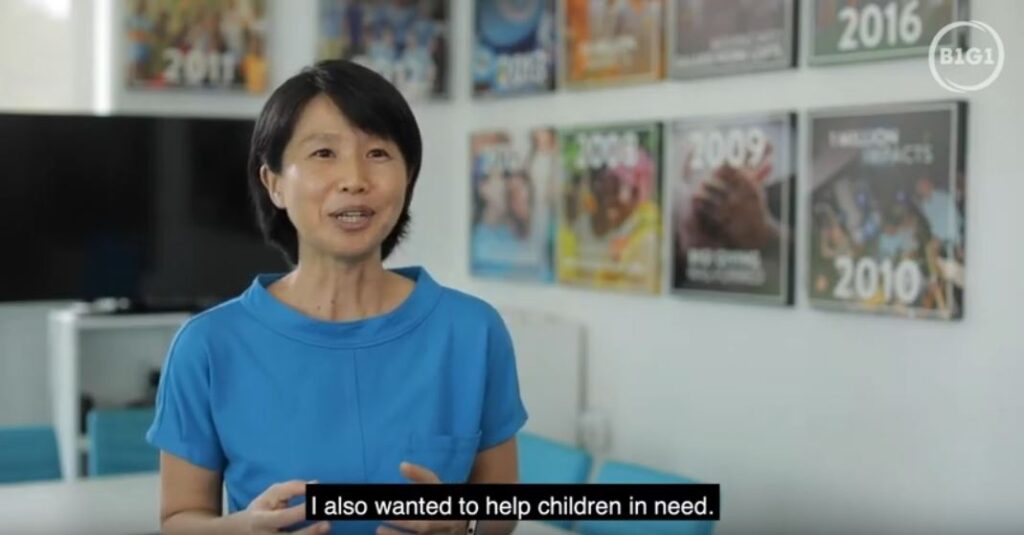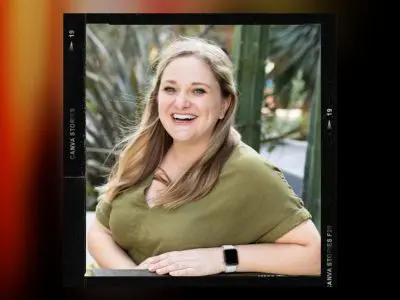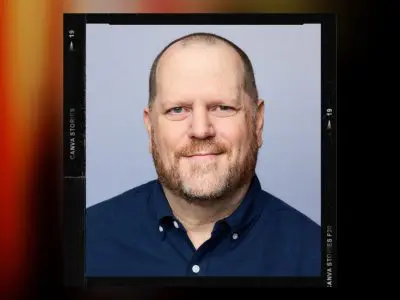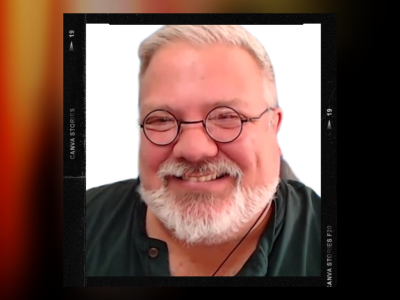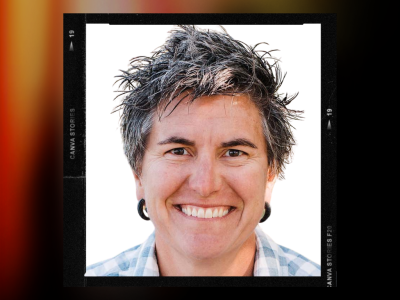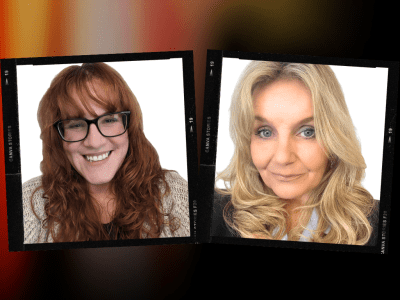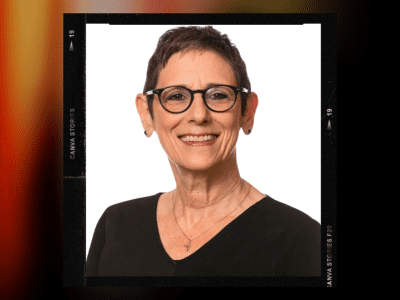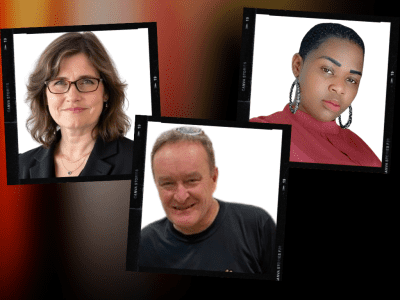Masami Sato & B1G1
Country: Singapore
Use the buttons above to listen now.
Transcript - Masami Sato & B1G1
Intro
The following is a presentation of TeamBonding providing more than 100 live, virtual or hybrid corporate team building activities for companies around the world. Visit teambonding.com to schedule your event now.
Rich, your host
Hello team once again. It’s me, your new best friend, Rich Rininsland. And welcome to Team Building Around the World, the podcast where I speak to people from the team bonding, team building industry, from all across the globe. Tonight, my friends, we’re doing things a little bit differently. We’re reaching all the way out to Singapore to speak to Masami Sato, who is actually the Founder and CEO of B1G1, but of course, before we get to Masami, let me take a second and share some love with my supporters. This show is supported by the Catalyst team building network. Find out more about the world’s largest network of team building providers at catalystglobal.com and I do want to thank our friends over there. B1G1 which can make your business a real force for good visit. B1G1, one.com to get started now, back in 2007 a woman who is a self described serial entrepreneur, created a company that is all about giving. She’s been the founder of B1G1 which stands for buy one, give one. She’s a two time TED X speaker. She’s an Amazon Best Selling Author. She’s the winner of the Sustainable Business Award and a finalist for the inspired leadership award. Ladies and gentlemen, my team out there please give a huge round of applause for Masami Sato. Thank you. Thank you very much. Don’t worry about those people. That’s just a small collection of people I keep trapped under my desk, and they’re only there to applaud, but they’re having good time. That’s why they applaud. Masami, how are you this morning?
Masami Sato
good. Thank you. Glad to be here. I am excited to be here with you.
Rich, your host
Thank you. Thank you so much. I really was I have been looking forward to meeting and talking with you since we started this podcast, because I’ve been doing buy one, give one as a live read in this show the entire time. And almost every company that I’ve spoken to as they’re part of the catalyst network they work with, buy one, give one, hardly any of them could actually explain to me what it is and what you do. So I’m so glad you’re here, but I would love you to start off actually, by telling my team out there all about you who is Masami Sato.
Masami Sato
So Masami Sato, so from the name, you may guess that I come from, maybe Japan or so. I’m Japanese and but for more than half of my life, I’ve been living in different parts of the world, and I started an organization called b1g1, in 2007 so it’s been 13 years now, and today, like this week, we are celebrating our 13th anniversary, actually.
Rich, your host
Oh, fantastic. Congratulations.
Masami Sato
So I’ve been an entrepreneur like for the last two decades. But then b1g1 is the thing that we’ve been working on now, and b1g1 which is also known as buy one, give one, as Richard said, is a global Giving Initiative which helps businesses around the world to embed the giving in what they do, and as a result, to create great positive impact through what they are doing. So that’s b1g1, and so if you just imagine, imagine if every time you had a cup of coffee, somebody received access to life saving water, or every time you bought a book, a tree gets planted. So b1g1, makes these things happen, working with many different kinds of businesses, of small businesses or bigger businesses, any types of businesses. And so we have a more than 500 carefully selected project in b1g1, that businesses can choose to give to, and we pass 100% of their giving to project and make sure the projects that are working on the ground can focus on doing the great things that they are doing. And today, b1g1 is 13 years old, and we’ve worked with 1000s of businesses, and many of those businesses are small businesses as well. But then over the last 13 years, those businesses have, together created more than 208 million giving impact. So that’s the one to one the community of businesses, we call a movement, giving movement today.
Rich, your host
That’s fantastic. Masami, congratulations. Now let’s talk a little bit more about you, if you don’t mind, how did this start for you? What made you decide? Because I’m reading over your bio that you can find at b1, g1, com, it says that you’ve been an entrepreneur since 2001 running several commercial enterprises. What made you decide that this was the direction you were going to go in?
Masami Sato
Okay, um, so when I first started. A business. The first business that I started, it was a food business, and for me, as a person who spend my time as a cook and chef and working in many different restaurants and cafe previously, I was passionate about food, and I was also passionate about providing people happy and nourishing the eating experience in the family environment as well. So I wanted to make that happen through what I did. So I started the business, thinking that if I could provide an opportunity for busy working families to eat more healthy and enjoy the time and find a convenient option, then I wanted to make a business to also contribute the profit to help build a soup kitchen to help street kids so that they can have access to food and education. And that came from the fact that I actually spend a couple of years in a few years traveling around the world in my youth as a back young backpacker, and then I met so many people, and then I started to see so many issues in the world where kids are not going to school, or people with a physical disability didn’t get help, or there are lots of things. I didn’t know why those were happening and but then I didn’t know how to solve those problems, either. So when I set out to start my business, and that just happened when I became a mom as well for the first time. So thinking about my own daughter and how much I loved and wanted to do everything for her, but knowing that in other parts of the world there are kids who didn’t have much and they want enough help, and so I thought I would start a business, and at least do try to do something in my own way, and I wanted to give all the profits away when we become successful. So that’s, that’s how I started my business. And I worked really, really hard and and we overcame many, many challenges as well through that. But about six years after I started the business, and then, compared to where we started, we were doing relatively well, like we were, we were we became a wholesale food business, and we were selling packaged frozen meals to more than like, 100 to 50 retail stores across many parts of Australia.
Rich, your host
Amazing.
Masami Sato
But then one day I stopped, and I suddenly realized that even though we were doing better and we were selling more, we weren’t doing anything because we were too busy, and we still didn’t have enough money, because we were putting all the money back into business, right? More better packaging, or more marketing, or
Rich, your host
like most people who are like most people who start a business, discover all that money’s got to go back to the business in the beginning.
Masami Sato
Yeah, so we believe that we have to grow the business first or become really successful, so that one day we could do good things. Fantastic. If we are waiting for good big things, then it might not happen. And then I realized that, what if, like, instead of trying to do big things, we did something small, which is, every time we sold a product, we gave a meal to a child. So that’s the kind of transition into b1g1 thinking.
Rich, your host
that’s actually what I wanted to get into next. What is the b1g1 thinking? I mean, what is the I don’t want to say just methodology, but the philosophy behind b1g1
Masami Sato
I believe that every business start with a sense of purpose, because they the the owners, you know, of businesses, actually care about something, and that’s why they start the different businesses. And some people might care about, you know, quality of education, or people’s well being physical well being Okay, so that’s why they start a health business or in my case, I started a food company. But then, as a business owner and entrepreneur myself, I met many other great business people, and I knew they really cared, and they wanted to do something. They wanted to see great future for their children and grandchildren and for their community as well. So I thought, what if, instead of trying to do something big, we do small things. And what if we made giving really easy and tangible and meaningful for that, so that every small business can say, every time we achieve something, we serve a customer, we want to create a positive impact in this way or that way. And back then, there was no such thing, even though I was so determined to make my own business succeed and grow. But after. A while, I realized that if there was nobody doing this, you know, this making things easy for business people to make a difference, then there are lots of other people who wanted to run food businesses. So I decided to sell my food company in Australia, and then moved to Singapore to start b1, g1 as a global giving initiative to precisely make that happen. So that’s been 13 years in the making of that idea.
Rich, your host
Wow, amazing. Masami, can you actually give me one second here, as we’re talking about this, I do need to pay little bills on my end. So let me actually take a moment and talk to my team about one of the partners of b1g1, Catalyst team building Network, an association of team building providers with representatives in over 90 countries speaking more than 20 languages, the catalyst network is widely regarded as the voice of the team building industry. Network members share resources, best practices and business opportunities. Catalyst partners are learning from each other and pushing the boundaries of what is possible in team bonding. Catalyst network members share a common goal of creating highly relevant, socially responsible, good value experiences for their clients. So for more information, please visit catalystglobal.com the catalyst team building network, the world’s largest network of team building providers. All right, we’re back with Masami Sato now, Masami, it’s a fascinating idea convincing businesses to give away money just to be part of not necessarily just their community that they’re centered around, but the global community. But let me actually ask you, how does it work? What is it that you actually do for these businesses?
Masami Sato
Idea is very simple: buy one, give one, but how does it work? That part is actually a little bit more complex than the idea itself.
Rich, your host
I was thinking so, yes, I’ll be honest with you, personally, I have been podcasting now. I have interviewed over 20 individuals, some couples, and I’ve asked them all about b1 g1 and what b1 g1 has done for their business. And none of them can give me a straight answer as to how it actually works. So that’s why I have you here to ask you
Speaker 1
all right. So let me explain.
Rich, your host
please, and then I’ll tell them when next it comes up.
Masami Sato
Good idea. So, so when we created the b1, g1, we were clear about three important things that we had to make work, because charity giving is isn’t scarce. You know, charities have been existing for a long time, and there are many of them, and they’re giving opportunities. Are plenty as well, and people can donate to their money as whenever they want to donate these days. So why is b1 g1 important for businesses? So there are three things. First thing is impact. B1, g1 is always about the impact that businesses can create. So when charities say, oh, please donate to us, that doesn’t mean people understand where the money goes. So b1, g1, works with charity organizations around the world who have to meet certain criteria, such as that they have a good financial recording, and also good track record in what they are doing. And then once they pass all that criteria, then we would work with them to break down their project into micro units. So if it is about building a well to give access to water to people, then we find out how much the well cost and how many days, or how many years, or how many months those things last, and then how many people that item will provide benefits to? And so when we look at all these figures, then we will come down to small impact units, such as giving access to days water, clean access to water could be just one cent for one day per person, or planting one tree could be $2.50 in this vision, or $3.40 in that part of the world. And so we have all these projects that were created in b1, g1, so what happened is, when businesses come to us and join us, they could go to create giving stories, such as every time somebody participated in the catalyst team building activities, we want to educate one one child for the entire month in this part of the world, yeah, every time I sell a book, then I want to plant one tree and porn so all the businesses can have their giving stories, and we have the platform, like the giving platform, to allow them to do that, and then also see the number of impacts being created over a period of time. And, for example, embed that on their website as a live counter. Or so, we exist to provide benefits to. Businesses so that they are giving becomes impactful. And then the second element is habit. So if giving is once off, that you donate, you know, $10,000 and then present a big check on stage. But then, if it doesn’t actually create ongoing activities, then that one of giving may not be truly sustainable in the long run, so we wonder one helps businesses create a habit of giving. That’s why we ask members, our members, to embed the giving in what they do, rather than just do one of giving. So when lots of businesses are creating habit of giving and continuously during the giving, then we no longer worry. Need to worry about, like fundraising, big campaigns and depend on those things, because then businesses are happening every day anyway, without us thinking about it. So that’s habit, the second element, and then the third thing is connection. We want the giving and sense of giving to unite people together. So we don’t want to just businesses to donate the money and say hey, like that was good look at me. But we want the businesses to be able to say to their teams and customers, thank you for being part of what we are doing, because together, we are creating this impact. And so we help businesses to create and form this kind of sense of connections, and we try to do that better. So that’s why this is not just about charity portal, but it’s a community of businesses coming together and inspiring each other as well and sharing their ideas. So that’s kind of three things that we do, and we do that with business membership program. So we never take a percentage of charity donations from, you know, most of the fundraising initiatives probably take percentage, and then they cover the cost of overhead and so on from that percentage of donations. But in b1 to one, every cent you give goes to the project. Because if we take percentage from the one cent that you give to give give access to water, then it can’t create water. So we make sure 100% goes and we top up bank charges as well. But the thing is, because then the question is, how does that work in terms of operation and cost and so on, right? So we have a membership model where businesses can join based on the company size. So tiny business can join as a member for just $1 just $1 a day, right? Like so then that $1 a day goes to the development of initiative, and then all of the giving that they do will go to the project. And so that’s the kind of work of bi wanjuan. And we are really grateful that even though what we are doing is fundamentally helping the business to give away their hard earned money, but we have many amazing business people to still say, Well, I believe in that mission. We believe that the businesses with a real sense of purpose can change about and I want to be part of it. I want my company to be part of it. So it’s a growing community today.
Rich, your host
Fantastic, because it is important that they all know that this isn’t just, like you said, a one lump sum, you know, given every couple of years. This is just small little percentages every day that help to build up over time. Good. Let me ask you this, though, does the company have any choice in like, a list of the charities that you donate to Yes,
Masami Sato
you you that any businesses that are part of b1g1 to one can choose the project they want to support. Some companies want to give, you know, globally and spread the giving to many different projects. Some companies could be very focused on specific type of project, like human human rights issues, or it could be environmental issues. So we have so many different projects, and some companies might want to give some of their giving to local projects, and then some of the giving goes to international project. And b1, j1, actually, in fact, has stronger focus on global giving, rather than we, we are the best place like B1G1, is the best place to do lots of local giving in terms of variety. But the reason why we do that is, of course, like businesses can always find and they give to or support or volunteer their time with local charities if they want to, like, you know, small community group in their town, or sports teams, and they go and then use their time and coach the children also, they could do all those things, and we want to them to do that in their own way. But then at the same time, we want to encourage global giving on top of it. And the reason why is that even. All, we naturally feel closer to the people in our own community or in our family or friendship cycle. But today, our lives and our businesses are supported by this interconnected web of amazing people and businesses and communities around the world, and because of the fact that they do what they do, we have a good that benefits us, or tools that we use, or energy that we need to drive our equipment, or so all those things are coming from some form of support and sometimes sacrifice or people around the world. And so if we could actually embed the giving in a way to express that gratitude we have, then we can together, help solve many complex, challenging issues and then, in a long term, create more holistic and sustainable world. So that’s the idea of b1, g1,
Rich, your host
fantastic. Hold on one second for me, if you don’t mind, Masami, would you have to step away one more time, and we’ll talk about yet another partner of b1, g1, this is a company I am very proud to be a part of TeamBonding out of Stoughton, Massachusetts. Team bonding was founded over 20 years ago with one simple question, how can employees make a great time while fostering strong, authentic bonds between people who work together? They’ve created a catalog of innovative events, using the power of play as a learning tool, and tapping into the correlation of work and play, from scavenger hunts to Jeopardy and so much more, the team bonding of activities, Live, Virtual and hybrid, maximizes the impact of team building with an accent on fun. Visit Teambonding.com to schedule your event now, team bonding when you want seriously fun results. Masami, I am in awe of you. I really am just listening to how I mean it is clear that you love what you do and how important it is to the world at large. I just have to ask one question, seriously, how do you make a living? How? How is it that b1 g1 because if this fails, then everything stops. So how does b1, g1 keep going?
Masami Sato
As I said, like the dilemma, you know, initially was like, how to make this work financially? Yeah, as well, because if we are doing 100% of giving, going to a project, and then we could not sustain our operation, even if our work was a good work. But we cannot continue doing it, and we cannot continue to scale what we are doing. So, you know, over the decade, we learned so much about it, and then in the earlier days when we had less benefit, we could give such as more complex system benefits or tools features and also marketing collateral. So we had very few of these things in the earlier days. So all we could say was to appeal to people’s sense of inspiration and aspiration to ask them to join this initiative. And then people came as long term partners, or b1, j1, and then contributed toward the movement. But then today, we switching our focus more toward making sure that giving will add value to every business, small and big. And then, as a result, we run a membership program, which start from just $1 a day. So small company, you know, tiny business or startup, could say, well, I want to make a giving part of what we are doing from day one. We don’t have a lot of money, but we have a lot of ideas, and we want to engage, and we want to create the impact through the business journey, then it’s easy for them to join the one day one. So with that, then we need to find the right to optimum balance of scale and then sustainability. So today, yes, like with the great work of our team, and we have a very small team, you know, for what we are doing, and they work really hard, and they are very smart, creative people, and they come and work with us for that shared mission. So we may not be the kind of highest paying organization, but we are so lucky to have all these amazing people to come and work with us and we build this together. And so we are confident because to continue to grow this initiative doing this, but we also receive a lot of support from our business community. So look at what you are doing. Richard, you said, oh, please come and then speak at on our podcast, or catalyst community is all behind us and supporting b1, g1, spread the word. So when all these businesses that we already work with are helping us spread the word, you know, of course, we don’t need to actually spend advertising, you know, money or because word of mouth is very powerful. And then. This means that those businesses contributions, we can actually scale our initiative, and the more businesses that joins us that create more capacity for b1, g1, to do better job in improving our systems, including our materials or communication and so on. So that’s kind of like how we make it sustainable. And for me too, the thing is, this is my life’s work, and I love what I’m doing, and I feel so grateful. And then I am part of employee, one of the employees of b1, g1, so that’s kind of I make sure that I can continue doing what I’m doing, and then that then eventually we want to kind of start empowering more leaders in our community to drive this together with us. So I’m looking forward to the next phase, because it’s been more than a decade, but the next decade is going to be very important for our world, because we are facing many, many bigger issues now and sustainability or issues around some conflict or so those things are becoming the bigger threat today. So perhaps v1, j1 in the next decade need to move bit faster than the last decade, and in order for us to do so, we need to have a real buy in from businesses, individuals and communities around the world to come together to make great things happen.
Rich, your host
Yeah, the entire purpose of this show is to prove that nobody can really do anything alone. It is a team effort to get things done, and not just part, as you’re proving not just part of a local team. Even though I’m sure I’m looking at your website, I’m seeing a bunch of smiling faces from your team, that you have their b1, g1, but you’re also part of a global team, that this is just one world community that we’re talking about now. So that is amazing. Is there anybody you want to give special shout out to, some special love to, especially as part of your anniversary?
Masami Sato
Well, actually, I love to give credit to every person you know who has chosen to join and belong this community. And I’m so grateful for Catalyst community and their partners, because you know, through that, we’ve actually created so many impacts. And at the same time, because catalyst is doing the event and connecting with lots of people and businesses, so that helps us spread the word as well. So I’m really grateful for everybody who is part of the catalyst community network, and then the entire b1, g1, business for good community of businesses and individuals around the world.
Rich, your host
Now here’s the thing, I am, well, I’ve been an actor for 26 years, an actor and a writer and so forth. I’m, as my mother has described me, a master at all things I can’t possibly make a buck at, so I don’t have the money to give to b1, g1, even though, just talking to you, I just want to open up my checkbook now. Is there anything that I can do, though, to help you and help your company, and anything my listeners out there who might not be able to especially now in the middle of the pandemic with the recession that we’re hitting, is there anything they can do to help you out?
Masami Sato
Sure, because we wonder why it’s not about the charitable donations, okay, like, because otherwise, whenever I’m going on somebody’s show or program, then I would say, okay, donate. Now, sure, right? Like, so that’s not what be wondering, why is about because be wondering why is about businesses embedding, giving in what they do as a result, every person can participate in creating the positive impact whether or not they actually donate anything. So the great thing that you can do is actually to think about businesses that may resonate with this idea of making effective giving in what they’re doing. So if you are going to, you know, favorite local cafe, they might enjoy learning about the way they could impact, you know, they could do more for the world. And so if you being part of spreading the word and said, Oh, have you heard about the b1, g1, you know, because that would be cool. And if you’re working for a company, then you might recommend to your company about this. You know, because it’s easy to do it from one sense, you can create an impact, and it’s easy to join and work with this community, then your business might want to be part of this. Alternatively, if you are already working for business, that’s part of b1, g1, then for you as a team member to learn more about what’s going on, or think about how your company and team can together make even greater impact, or embed the giving in what you do, or express your joy of giving and gratitude to your clients and customers. How to do that so as a team member of giving business. And if everybody is like taking greater stake in how things are done, then that benefits the business, of course, but also it’s created so much more potential impacts in the world. So there are so many things actually you can do great.
Rich, your host
Is there anything that say, like a small business can do to really shape just their general environment, anything you would recommend to
Masami Sato
them. Small businesses have a great power. And we talk about this idea power of small because actually, small things could be much more impactful than big thing. And that’s why we focus on micro giving than saying like, Oh, this is the most important type of giving. Let’s build a big school, or let’s run this campaign, because when we know something that needs to be done happens habitually, then changing the general habit is much more impactful than trying to get to the goals you know, such as you know you want to become a healthy Can you just suddenly go there, or is it that you need to make lots of little change and make a big difference in the long run? And so there is power in small and small businesses can do so much if they don’t worry about the smallness of what they can do today. So if they said, Okay, every time I actually have a meeting with a client, successful meeting. I want to celebrate that by planting a tree and then give, like, couple of dollars. And, oh, I can do that from today, and I’m going to track that then just by one small business doing it. Then if it inspired somebody else to do that too, because they then no longer worry about being small. And then imagine if, through the day to day interactions of those small businesses, many businesses start to do this, then it’s so much more profound than one big foundation or organization doing something as a result of, let’s say, CSR, so I think small is much more powerful than big
Rich, your host
well said, as a small person myself, well said, Finally, Miss Tommy. I just want to say thank you again. So much for coming on board. You were absolutely amazing. And I wish you luck with everything that you have going on. I hope we can talk to you again, maybe in a few months, and just see how everything you’ve come together and have really built up for you. Yeah,
Masami Sato
I would be delighted to do that. And thank you so much for having me here. It’s been a great joy to be here with you. Richard, thank
Rich, your host
you. Thank you very much. Once again, ladies and gentlemen, my team out there, look for Masami Sato everywhere you can find her on YouTube, she’s been the two time TEDx speaker. Please look for her books, joy, the gift of acceptance, trust and love, giving business, creating the maximum impact in the meaning driven world. And better business, better life, better world. She’s done everything. She’s all over the place, and she is amazing to talk to and to listen to. So give her a look. And of course, if you’re especially if you’re part of a business, go to B, 1g, one.com, and learn all about how you can make just the smallest amount of giving a priority for your company. Now. Masami, I hate to do this to you, because normally I have people who are in the team building industry on and one of the things that we do is play fun, silly little games with our audiences, our guests, our clients, so that we can energize them and get them going. And I’m going to do the same to you. So what we’re going to do now is we’re going to put you on the hot seat with our speed round what this is for the next 60 seconds, I’m going to ask you just a series of completely innocuous questions. Your objective is to try to answer them as quickly as you can. First thing right off the top of your head. Do you think you can do it? Okay?
Masami Sato
I will try.
Rich, your host
Great. I don’t know how competitive you are, but the number to beat for me is 13. Just in case you wanted to know. Now what’s gonna happen is you’re gonna hear you’re gonna hear some music. I’m gonna start asking questions, and we will get going. All set?
Masami Sato
set.
Rich, your host
Then away we go. What’s your name?
Masami Sato
Masami
Rich, your host
How many children do you have?
Masami Sato
two
Rich, your host
Which one’s your favorite?
Masami Sato
Both?
Rich, your host
Good, nice answer. Do you have any pets?
Masami Sato
No,
Rich, your host
okay, which book are you most proud of
Masami Sato
The Giving Business.
Rich, your host
Okay, what would you do if you were invisible for a day?
Masami Sato
Sneak into people’s kitchen.
Rich, your host
Excellent. What’s your favorite movie
Masami Sato
Forrest Gump
Rich, your host
Would you rather live for a week in the past or the future?
Masami Sato
Future
Rich, your host
Nice. What’s your favorite children’s story?
Masami Sato
Toy Story
Rich, your host
excellent. Nine. A very respectful nine, well done.
Unknown Speaker
All right,
Rich, your host
they were firing off answers like it was their job. It’s you should look at some of my podcasts and just see how people answer some of these questions. Ladies and gentlemen, we’ll be practicing this great. Yeah, get ready for next time, although next time I’ll have a whole new game for you team. Please give a big round of applause and thank you to Masami Sato, and remember go to B, 1g, one.com to learn all about not only her, but her industry and how she’s trying to make the world better. And as for me, thank you all for listening to team building around the world. If you like this show, please share it with a friend or a colleague, and we’d be so grateful if you could subscribe to us on Apple podcasts or wherever you find your favorite podcasts and leave us a favorable review. If you don’t want to leave us a favorable review, that’s fine. Just forget about it. All of our past episodes can be found@teambonding.com and there we go, my friends, one more time. I have been rich riddens land. This has been team building around the world. And remember, if you are within the sound of my voice, you’re on my team now, and I have always been on yours. Thank you, everyone, and we will see you next time you.
It’s been said that you learn more about a person in an hour of play than in a year of conversation. So why not put your coworkers to play with the help of the team at team bonding, team bonding was founded over 20 years ago with one simple question, how can employees have a great time while fostering strong, authentic bonds between people who work together? Their catalog of innovative events includes scavenger hunts, Jeopardy and much more. Each activity, whether Live, Virtual or hybrid, maximizes the impact of team building with an accent on fun. Visit team bonding.com to schedule your event now team bonding when you want seriously fun results you.
November 24, 2020
Rich has been talking about B1G1 throughout the season, and this week we talk to its Founder and CEO, Masami Sato.
B1G1 stands for “Buy 1 Give 1”, a global business giving initiative that helps businesses give back in meaningful ways. B1G1 is an effective ‘transaction-based’ giving connecting businesses and charity organizations (high-impact projects) around the world in real win-win relationships. Masami is an author of three books, a mother of 2 young children, and an active entrepreneur. Since 2001, she has founded and led several enterprises and initiatives.
Born in Japan, Masami and her desire to expand her horizons at an early age took her on a journey of exploration traveling throughout the world. She traveled to over 25 countries and lived and worked in Canada, New Zealand, and Australia before moving to Singapore in 2007.
" If you’re waiting for good big things, it might not happen. Then I realized, what if instead of trying to do big things, we did something small? Which is every time we sold a product we gave a meal to a child? And that was the transition into B1G1 thinking. "- Masami Sato
Get more human resources and leadership advice.
Less drama? Greater teamwork and job satisfaction? TeamBonding is here to help you build a stronger and happier team. Subscribe to get our team building podcast and thought leadership blogs sent straight to your inbox.
